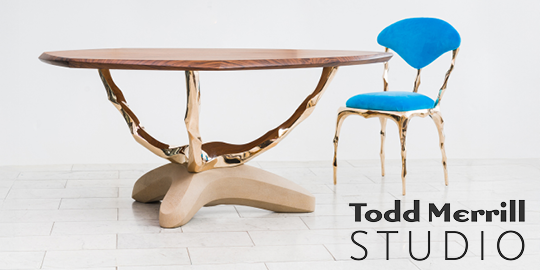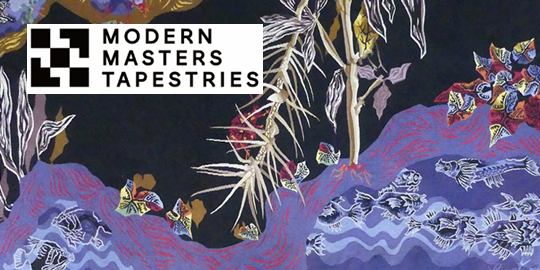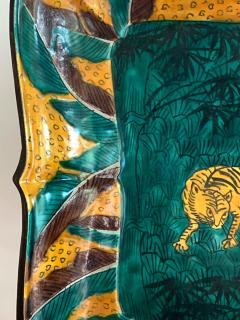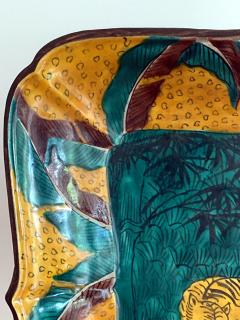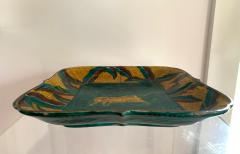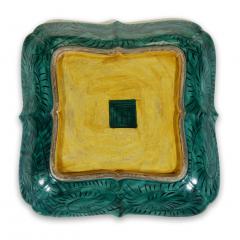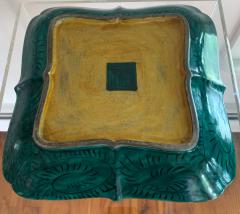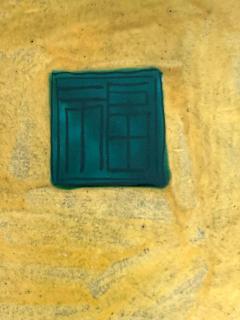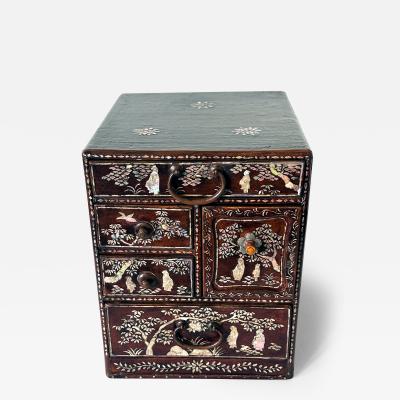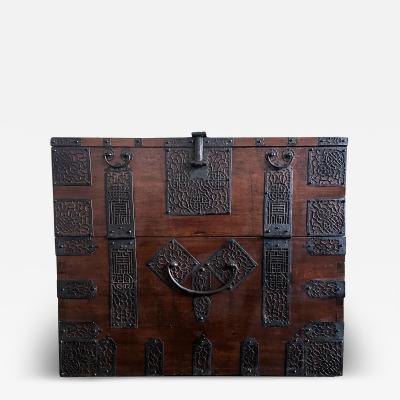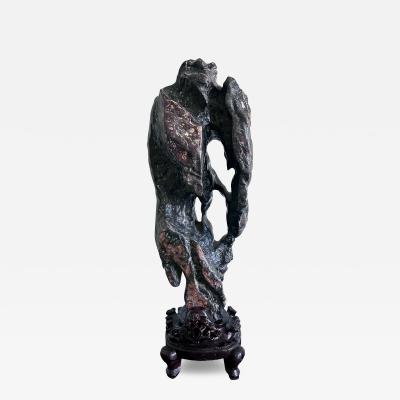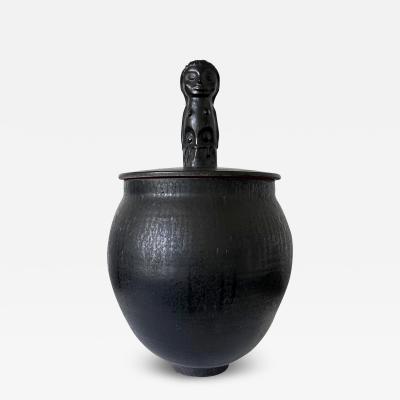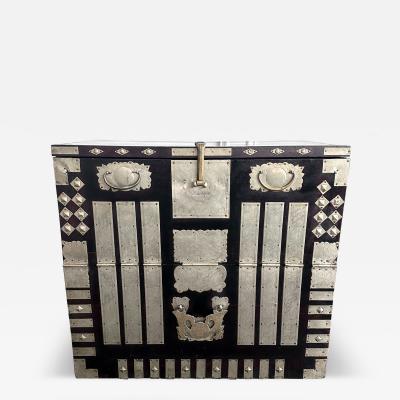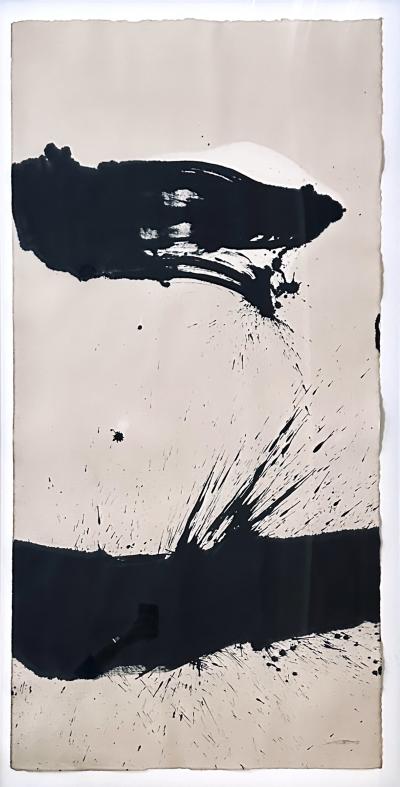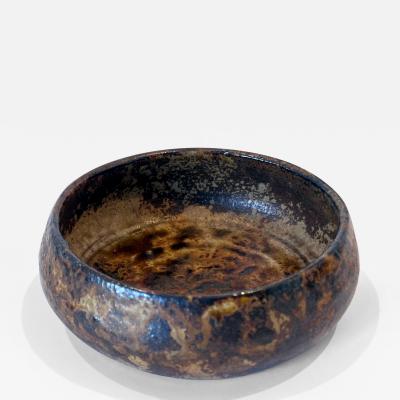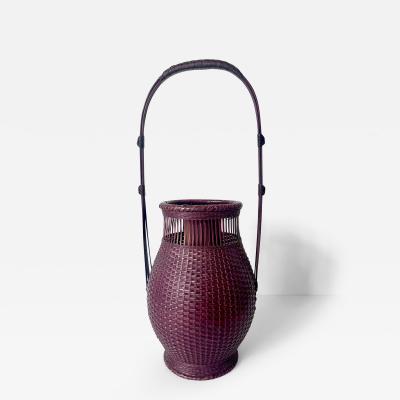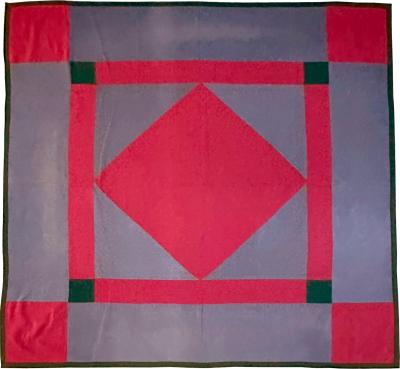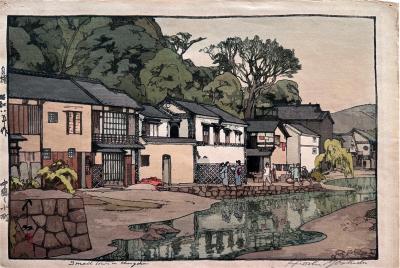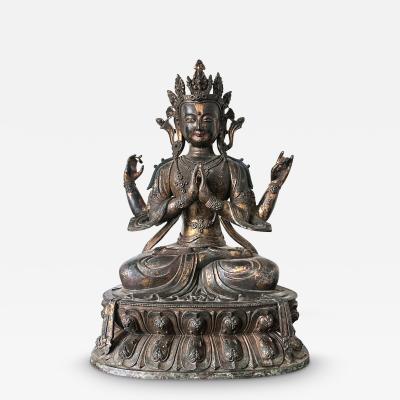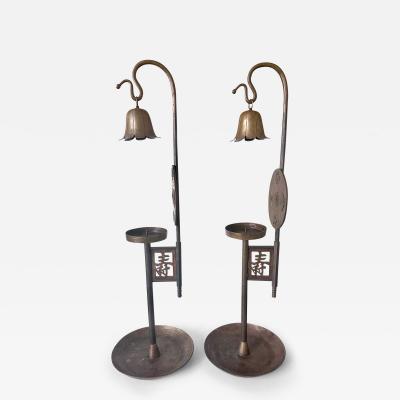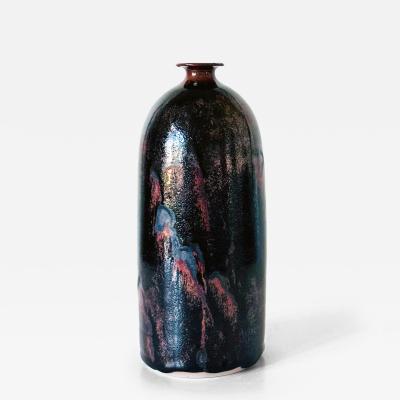Japanese Yoshidaya Saiko Kutani Ceramic Dish
-
Description
A Japanese stoneware dish with overglaze decoration in the shape of barbed quatrefoil shape from late Edo period circa early-mid 19th century. Around 1804, 100 years after Ko-kutani (old-Kutani) ware disappeared abruptly after thriving from 1655-early 1700s, saiko-kutani (revived-kutani) was attempted by many kilns and several distinguished styles developed. Among them, Yoshidaya kiln attempted to revive the original style of Ko-Kutani known as Aote, which employed four dark colors: green green, yellow, dark blue/black and aubergine to create bold and striking deisgn. The Yoshidaya production was short-lived and lasted roughly from 1823-1831. This dish is likely dated from this period or shortly after. The overglaze design centered around a crouching tiger under a black bamboo grove in a deep green background, surrounded by luxuriant banana leaves in green and aubergine with black outlines. The base of a similar concentric barbed quatrefoil design is further decorated with black foliage outlines and marked with a square fuku mark.
For a Yoshidaya dish with identical shape but different landscape decoration, see lot 79 of sale 6547 Christie's London. Important Japanese and Chinese Art from the Manno Art Musuem. 21st June 2001
Historical background:
Yoshidaya is the professional name of Toyota Denuemon IV, AKA Sekio (1751-1827), a wealthy merchant living in Daishoji who Invested in kiln to make Ko-Kutani wares. Initially, he built a kiln Yoshidaya next to the Old Kutani kiln at his own cost to revive Aote ware. The production was very close to Ko-Kutani in the artistry and quality, which were acclaimed by the the wealthy class and intellectuals of the day. But his efforts of pursuing the ultimate quality with a disregard for profit put the business in a predicament. He then moved the kiln to the Yamashiro area, which was much easier to access, to restore the financial situation. Despite this, 7 years later in 1831 the business was forced to close down. The closure of Yoshidaya kiln deteriorated the production of Aote Kutani, but it flourished once again in the “Matsuyama kiln” made by the Daishoji clan. The Matuyama kiln worked on the production of Aote Kutani ware till the abolition of the feudal system by the Meiji government in 1868. -
More Information
Notes: Yoshidaya kiln Origin: Japan Period: 19th Century Materials: Ceramic stoneware Condition: Good. Minor wear and patina, minute kiln imperfection. Creation Date: first half of 19th century Styles / Movements: Traditional Incollect Reference #: 319941 -
Dimensions
W. 11 in; H. 2 in; D. 11 in; W. 27.94 cm; H. 5.08 cm; D. 27.94 cm;
Message from Seller:
Tishu, based in Atlanta, GA, offers a diverse collection ranging from Neolithic art to 20th-century collectibles, with a focus on Mid-century design, Japanese and Korean art, Asian textiles, and Contemporary Aboriginal art. Driven by a passion for timeless beauty, the gallery is open by appointment only and offers works that span 5,000 years of history. Reach them at 305-400-0561 or tishu@tishugallery.com.





